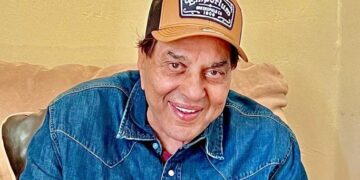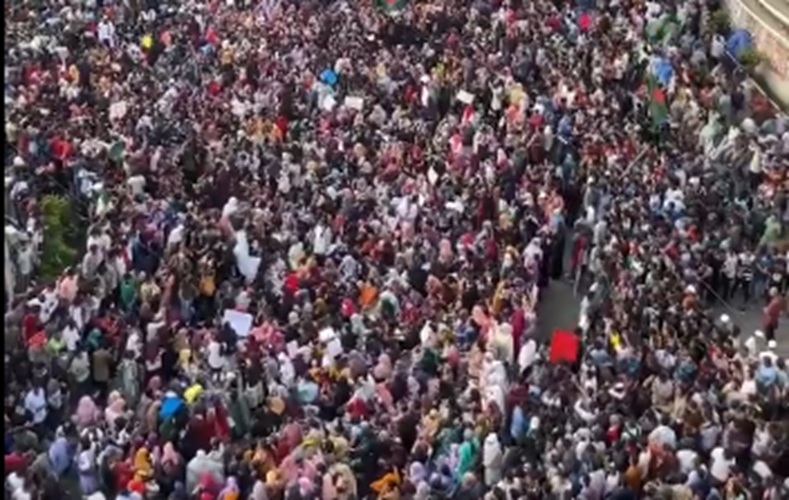Early in November this year, the Dr Muhammad Yunus-led Interim Government in Dhaka scrapped a plan to recruit music teachers in primary schools.
Music had been part of Bangladesh’s school curriculum since Liberation from Pakistan 54 years ago.
Islamists objected to it as an “un-Islamic” practice. They want teachers for Islamic studies instead.
According to a BBC Bangla report (November 8), the religious affairs adviser in the Yunus cabinet forwarded a proposal to recruit primary teachers from Qawmi madrasas.
There are some 15–20 thousand such madrasas teaching Arabic and promoting the most fundamentalist Wahhabi interpretation of the Quran.
This is just one example of a changing Bangladesh, fast emerging as the latest hotspot of Islamic fundamentalism.
The turn was evident immediately after the July uprising, when Islamists went on a rampage destroying sculptures—including those of the leaders of the freedom movement against Pakistan—across the country.
This was followed by widespread attacks on Sufi Islamic mazars or shrines.
Nearly 80 percent of these shrines now stand destroyed.
There were multiple attacks on Sufi singers, including incidents where they were forcibly shaved to conform to austere Islamic traditions.
The 90 percent Muslim-majority Bangladesh was exceptional in breaking away from the theological state of Pakistan in 1971 and creating a secular republic.
Over the decades, Islamic influence deepened. The military rulers—Ziaur Rahman and H M Ershad—inflicted the greatest damage on the secular fabric by rehabilitating Islamic politics led by the Pakistan-born Jamaat-e-Islami and by making Islam the state religion.
Yet, despite Islamist pressure, the country long upheld liberal values.
Sufi Muslims, who once spread a tolerant version of Islam in Bengal through music, coexisted with progressive Bangladeshis who drew inspiration from pan-Bengali culture and Rabindranath Tagore.
Dhaka boasted some of the finest exponents of Tagore songs—or Rabindra Sangeet, as Bengalis on either side of the border call it.
That entire edifice is now collapsing. A year after the uprising, Bangladesh is fast sliding into a sinkhole of Islamic fundamentalism.
Bangladeshi women had played a crucial role in the country’s progress: at 42 percent, their labour-force participation exceeds the South Asian average and matches several East Asian nations.
Jamaat wants to reverse that. Its chief declared that women should spend more time with their families, and other leaders openly called for stopping women from working.
The rhetoric and trend are strikingly similar to the Taliban in Afghanistan.
Attacks and harassment of female sportspersons have become common. Chhayanaut, a renowned cultural institution in Dhaka, has almost stopped public programmes.
Police are hesitant to permit Tagore song and dance events.
Fundamentalists openly harass women over dress. In one case, a Dhaka University employee harassed a woman for attire he deemed “un-Islamic.”
When police arrested him on her sexual-harassment complaint, a mob freed him and gave him a hero’s welcome. He later shared a stage with religious leaders.
What began with the ouster of feminist writer Taslima Nasreen in 1994 has now come full circle. In today’s Bangladesh, secular, moderate, and pan-Bengali values are no longer promoted.
Dr Yunus and several cabinet members project themselves as symbols of secularism, but that façade is wearing thin.
For years, Yunus had never been seen offering prayers in public gatherings. Now, photographs show him doing so.
Offering prayers is not wrong. But presiding over the country’s slide into a dangerous future must be called out.
It is his government that has released dangerous terrorists from jail. During the July protests, over 4,000 sophisticated weapons were looted from police armouries; roughly 1,500 guns and thousands of rounds of ammunition remain missing.
Protesters attacked prisons and freed hundreds of high-risk inmates.
The Yunus administration has done little to recapture them.
Bangladesh has a long history of terrorism. It was on the Financial Action Task Force (FATF) grey list for six years.
The blogger killings and the 2016 Holey Artisan attack were carried out by ISIS affiliates. After the July protests, ISIS flags appeared in Dhaka on multiple occasions.
The banned Hizb-ut-Tahrir has been holding press conferences and issuing statements.
The July movement that toppled Sheikh Hasina’s government is no longer seen as a spontaneous student protest—Jamaat has claimed full credit for orchestrating it.
In the words of its Deputy Chief, it was “our movement from start to finish.”
The success of that movement has made Islamists highly ambitious.
They already act as the de facto powerbrokers within the Yunus administration and now aim to capture power outright.
How this unfolds remains to be seen, but Bangladesh could soon pose a greater problem for the world than Pakistan. In Pakistan, power rests with the army and the judiciary retains some independence.
Dhaka, by contrast, has a weak army reliant on UN peacekeeping missions.
The trend suggests Bangladesh may soon reach new heights of Islamic extremism—and its army may be too feeble to control it.















